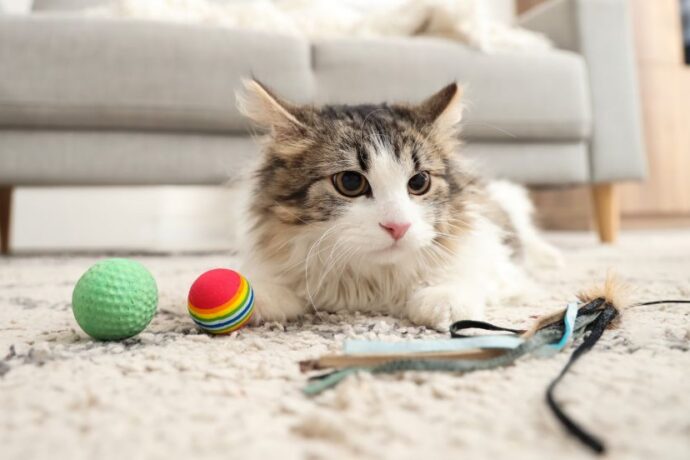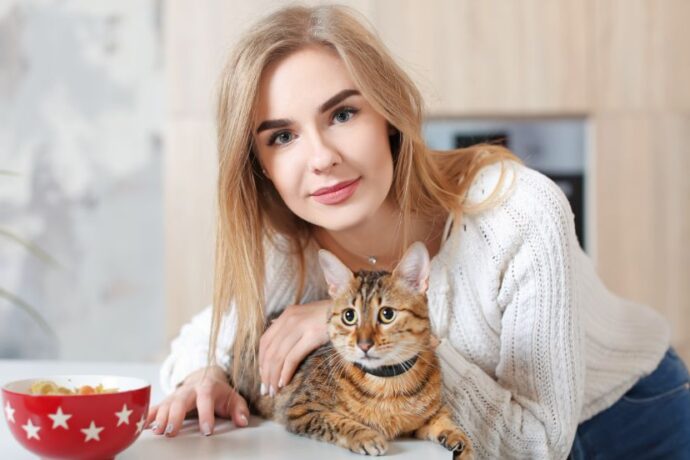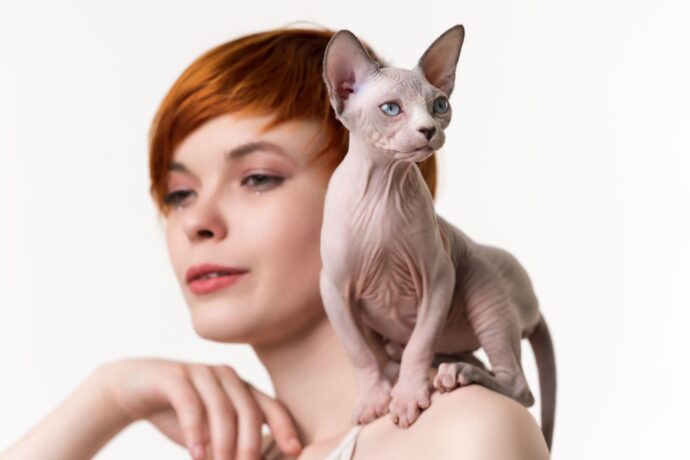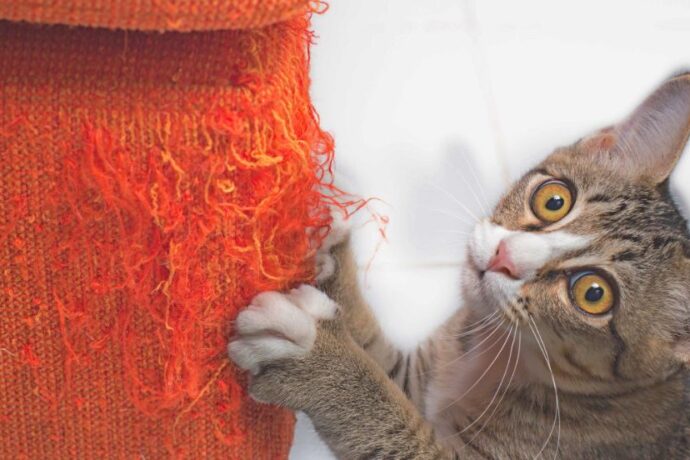Cats may seem independent, but their health depends heavily on what they eat. While premium cat food provides balanced nutrition, adding safe, natural superfoods can give your feline friend an extra boost. These nutrient-rich foods can enhance immunity, improve digestion, support heart health, and even give their coat a healthy shine. However, not everything healthy for humans is safe for cats — so knowing which foods are beneficial and which are harmful is essential.
What Can Cats Eat? Understanding Feline Nutrition and Allergies
Cats are obligate carnivores, meaning they require animal-based proteins and certain nutrients — like taurine, arachidonic acid, and vitamin A — that they cannot get from plants alone. While some superfoods are safe and healthy, they should complement, not replace, a balanced feline diet.
It’s also important to watch out for food sensitivities and allergies. Common allergens for cats include dairy, grains, and certain proteins. Introduce superfoods slowly, in small amounts, and monitor your cat for any signs of discomfort, such as vomiting, itching, or diarrhea.
Study Insight: According to a 2022 review published in the Journal of Feline Medicine and Surgery, introducing nutrient-dense whole foods alongside a balanced diet can support overall feline health, but moderation is key (1).
15 Superfoods Safe for Cats — Benefits & How to Serve Them
1. Cooked Salmon

Benefits: Rich in omega-3 fatty acids (EPA & DHA), salmon supports heart health, joint mobility, brain function, and a glossy coat. It also provides high-quality protein for muscle maintenance.
How to Serve: Always cook salmon thoroughly to eliminate parasites and bacteria. Serve in small, boneless flakes without seasoning, oil, or sauces. Avoid smoked or salted salmon.
2. Blueberries
Benefits: Blueberries are loaded with antioxidants, vitamin C, and fiber, which can protect cells from oxidative stress, support cognitive function, and promote gut health.
How to Serve: Wash thoroughly and offer one or two blueberries as a snack, fresh or frozen. Mash lightly for kittens or senior cats.
3. Pumpkin

Benefits: Rich in fiber, beta-carotene, and potassium, pumpkin supports healthy digestion, relieves constipation, and reduces hairballs by improving intestinal motility.
How to Serve: Use plain, cooked, mashed pumpkin or 100% pure canned pumpkin. Avoid pie fillings, which often contain sugar and spices that can harm cats.
4. Carrots
Benefits: Carrots are a great source of beta-carotene, vitamin A, and antioxidants, promoting healthy vision, skin, and immune function.
How to Serve: Steam or boil carrots until soft, then chop finely or mash. Raw carrots are harder to digest and may pose a choking hazard.
5. Spinach

Benefits: Spinach contains vitamins A, C, and K, iron, calcium, and folate, all of which support immune health, bone strength, and metabolism.
How to Serve: Steam lightly, chop finely, and mix small amounts into your cat’s food.
Caution: Avoid spinach if your cat suffers from urinary tract issues, as oxalates can worsen crystal formation.
6. Eggs
Benefits: Eggs are an excellent source of high-quality protein, essential amino acids, and B vitamins. They also help improve muscle tone and energy levels.
How to Serve: Scramble or boil eggs thoroughly — avoid raw eggs due to salmonella risks. Serve plain without oils, butter, or seasoning.
7. Sweet Potatoes
Benefits: Sweet potatoes are rich in fiber, antioxidants, and vitamin C, supporting digestive health and boosting immunity.
How to Serve: Peel, boil, or bake, then mash and serve plain without salt, sugar, or spices.
8. Apples
Benefits: Apples contain vitamins A and C that boost immunity and overall well-being, while their antioxidants help fight free radicals.
How to Serve: Remove seeds, core, and skin — apple seeds contain cyanide, which is toxic to cats. Offer small, bite-sized slices sparingly.
9. Green Beans
Benefits: Low in calories but high in fiber, vitamins C and K, and manganese, green beans make excellent snacks for overweight or diabetic cats.
How to Serve: Steam or boil plain, cut into small pieces, and avoid using butter, oil, or seasoning.
10. Watermelon
Benefits: Watermelon is over 90% water, making it a hydrating snack, especially in summer. It also provides vitamins A, B6, and C for immune and skin health.
How to Serve: Remove all seeds and rind before offering tiny, seedless cubes.
11. Cranberries

Benefits: Cranberries are packed with antioxidants and may help support urinary tract health by preventing bacteria from adhering to bladder walls.
How to Serve: Offer a tiny portion of fresh cranberries or unsweetened dried cranberries. Some cats may prefer cranberry puree mixed into food.
12. Zucchini
Benefits: Low in calories but rich in vitamins A, C, and potassium, zucchini supports hydration, digestion, and overall vitality.
How to Serve: Steam lightly and chop into small, soft pieces. Avoid raw zucchini for cats with sensitive stomachs.
13. Chicken
Benefits: A lean protein powerhouse, chicken supplies essential amino acids that maintain muscle mass, boost energy, and support healthy tissues.
How to Serve: Cook thoroughly — boiled, baked, or steamed. Remove bones, skin, and seasoning before serving.
14. Oats
Benefits: Oats are a great source of soluble fiber, iron, zinc, and B vitamins, which help regulate cholesterol levels and promote heart health.
How to Serve: Cook oats in water (never milk) until soft and allow them to cool. Offer ½ teaspoon mixed with wet food.
15. Coconut Oil
Benefits: Coconut oil can improve skin hydration, reduce hairballs, and provide a quick energy boost thanks to medium-chain triglycerides (MCTs).
How to Serve: Start with just ¼ teaspoon mixed into food once or twice weekly to prevent digestive upset.
Serving-size Chart:
| Superfood | Safe Serving Size (Approx.) | Frequency |
| Cooked Salmon | 1–2 small flakes | 1× per week |
| Blueberries | 1–2 berries | 1–2× per week |
| Pumpkin | ½–1 tsp puree | 2–3× per week |
| Carrots | 1–2 tsp cooked, mashed | 1× per week |
| Spinach | 1–2 tsp steamed, chopped | Occasionally |
| Eggs | 1 tsp scrambled/boiled | 1× per week |
| Sweet Potatoes | 1–2 tsp cooked, mashed | Occasionally |
| Apples | 1–2 small slices (no seeds) | Occasionally |
| Green Beans | 2–3 small pieces | 2–3× per week |
| Watermelon | 1–2 small cubes (no seeds) | Occasionally |
| Cranberries | 1–2 fresh or unsweetened | Occasionally |
| Zucchini | 1–2 tsp cooked, chopped | Occasionally |
| Chicken | 1–2 small shredded pieces | A few times per week |
| Oats | ½ tsp cooked | Occasionally |
| Coconut Oil | ¼ tsp mixed in food | 1–2× per week |
Scientific Insights on Superfoods and Cat Health
Emerging research emphasizes the benefits of antioxidant-rich foods and omega-3 fatty acids in reducing inflammation and boosting immunity in cats. For instance, a study in the Journal of Animal Physiology and Animal Nutrition found that diets enriched with omega-3 significantly improved coat quality and reduced inflammatory responses (2)(3).
Still, veterinarians stress that superfoods should only supplement a balanced diet, not replace it. Always consult your vet before introducing new foods, especially if your cat has existing health conditions.
Frequently Asked Questions (FAQs)
1. Can I make my cat’s diet entirely from superfoods?
A. No. Cats are obligate carnivores and require a balanced diet formulated specifically for feline needs. Superfoods should only act as occasional supplements.
2. How often can I feed my cat these superfoods?
A. Offer small amounts 1–2 times per week. Overfeeding, even with healthy foods, can cause digestive issues.
3. Are all human superfoods safe for cats?
A. Absolutely not. Foods like grapes, onions, garlic, chocolate, and avocados are toxic to cats and should never be fed.
Incorporating safe superfoods into your cat’s diet can enhance their overall health — from a shinier coat and better digestion to improved immunity and energy. However, balance is key. Always introduce new foods slowly, watch for allergic reactions, and maintain high-quality commercial cat food as the primary source of nutrition. When in doubt, consult your veterinarian to ensure your feline friend stays both healthy and happy.
References:
1. Commercial vs Homemade Cat Diets: What you need to know
2. The role of dietary omega-3 and omega-6 essential fatty acids in the nutrition of dogs and cats: A review
3. Exploring the efficacy and optimal dosages of omega-3 supplementation for companion animals











